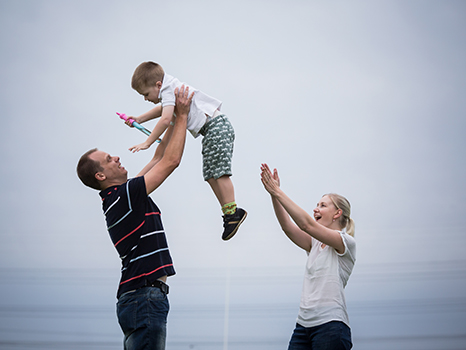Search
Research
Early life predictors of obstructive sleep apnoea in young adults: Insights from a longitudinal community cohort (Raine study)Obstructive sleep apnea (OSA) increases the risk of perioperative adverse events in children. While polysomnography (PSG) remains the reference standard for OSA diagnosis, oximetry is a valuable screening tool. The traditional practice is the manual analysis of desaturation clusters derived from a tabletop device using the McGill oximetry score. However, automated analysis of wearable oximetry data can be an alternative. This study investigated the accuracy of wrist-worn oximetry with automated analysis as a preoperative OSA screening tool.

The vision of the Perioperative Medicine Team is to make discoveries that will improve children’s perioperative care and lead to global practice change.
Research
Airborne personal protective equipment availability and preparedness in Australian and New Zealand intensive care units: A point prevalence surveyPersonal protective equipment is essential to protect healthcare workers when exposed to aerosol-generating procedures in patients with airborne respiratory pathogens.
Research
Impact of honey on post-tonsillectomy pain in children (BEE PAIN FREE Trial): a multicentre, double-blind, randomised controlled trial*Tonsillectomy, a common childhood surgery, is associated with difficult postoperative recovery. Previous reviews provided low-grade evidence that honey may improve recovery. The BEE PAIN FREE study investigated whether honey alongside multimodal analgesia improved the recovery trajectory in children following tonsillectomy.
Research
Impact of pediatric anesthesia management on cancer outcomes in children—a narrative reviewThe relationship between anesthetic technique and pediatric oncological outcomes is an emerging field of interest. With significant improvements in childhood cancer survival in recent decades, there is an increased focus on optimizing the quality of survival and reducing the incidence of metastasis and recurrence. The aim of this narrative review article is to investigate and consolidate the current available evidence assessing the immunomodulatory effects of anesthesia in the pediatric oncology population.
Research
Current Practices and Priorities of Anesthetists and Consumers for Infants Undergoing Inguinal Hernia SurgeryThere is a paucity of data on the chosen anesthesia management for infant inguinal hernia surgery. We aimed to characterize self-reported anesthetic practice in Australia and New Zealand. We also aimed to identify the outcomes that matter to both anesthetists and to parents and carers.
Research
COVID-19 implications for pediatric anesthesia: Lessons learnt and how to prepare for the next pandemicCOVID-19 is mainly considered an “adult pandemic,” but it also has strong implications for children and consequently for pediatric anesthesia. Despite the lethality of SARS-CoV-2 infection being directly correlated with age, children have equally experienced the negative impacts of this pandemic.
Research
Anesthetic considerations in children with asthmaDue to the high prevalence of asthma and general airway reactivity, anesthesiologists frequently encounter children with asthma or asthma-like symptoms. This review focuses on the epidemiology, the underlying pathophysiology, and perioperative management of children with airway reactivity, including controlled and uncontrolled asthma.
Research
Feasibility of upper airway collapsibility measurements in anesthetized childrenPatients with a propensity for upper airway obstruction, including those with obstructive sleep apnea (OSA), are vulnerable in the perioperative period. OSA is an increasingly common disorder in children and, when present, is associated with an increased risk of perioperative respiratory adverse events (PRAE),1 morbidity, and mortality. Therefore, identifying at-risk patients is vital to provide tailored perioperative anesthetic management.
Research
Direct versus video laryngoscopy with standard blades for neonatal and infant tracheal intubation with supplemental oxygen: a multicentre, non-inferiority, randomised controlled trialTracheal intubation in neonates and infants is a potentially life-saving procedure. Video laryngoscopy has been found to improve first-attempt tracheal intubation success and reduce complications compared with direct laryngoscopy in children younger than 12 months.
